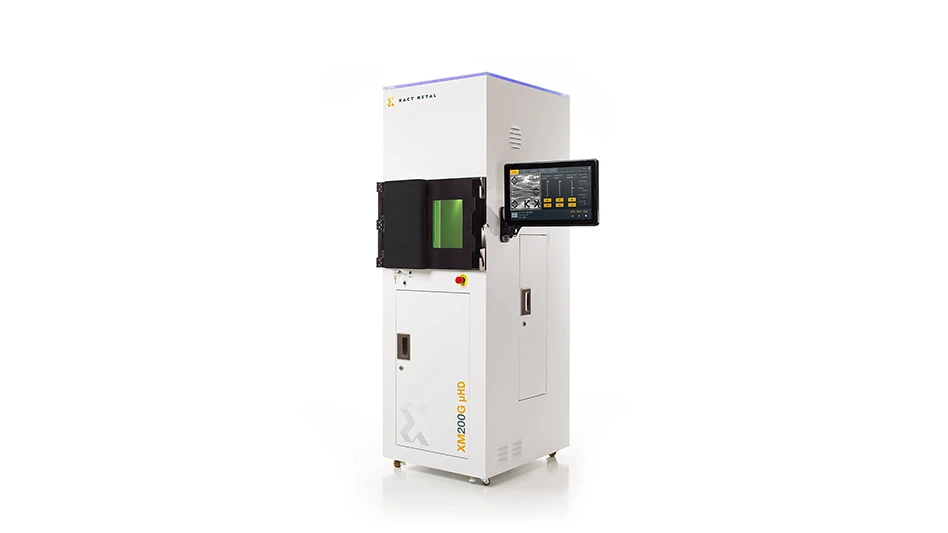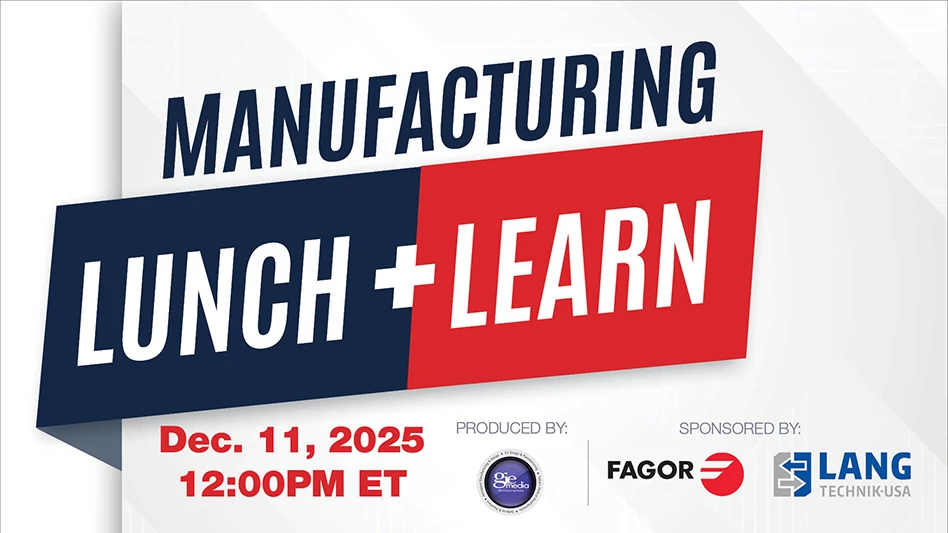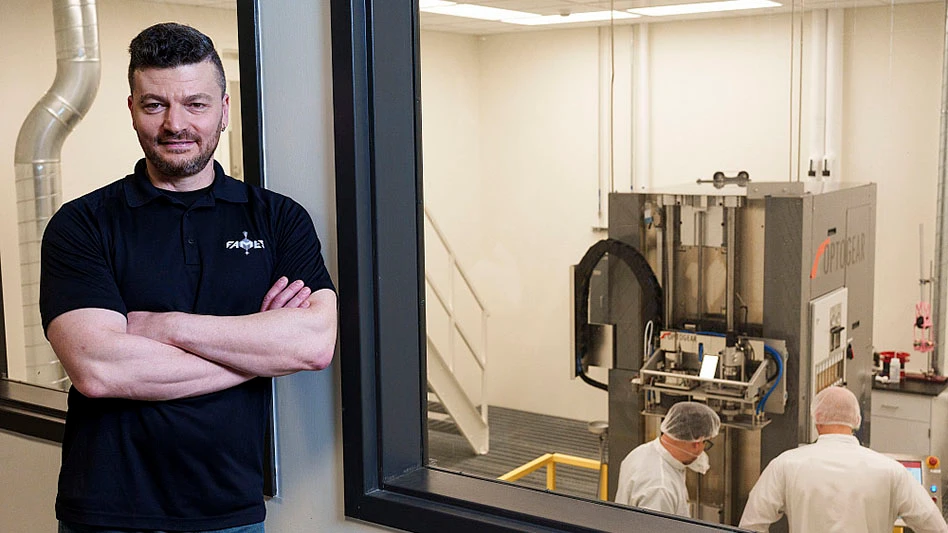 Oceanside, CA-based The Greene Group derives its name from founder G.G. Greene Sr. Established in 1904, and originally based in Warren, PA, the century-old enterprise now has its headquarters in California, with other manufacturing facilities in Michigan and Pennsylvania.
Oceanside, CA-based The Greene Group derives its name from founder G.G. Greene Sr. Established in 1904, and originally based in Warren, PA, the century-old enterprise now has its headquarters in California, with other manufacturing facilities in Michigan and Pennsylvania.
Part of The Greene Group team is Southwest Greene International, an ISO 9000-certified company specializing in precision metal part fabrication for high technology markets. Southwest has steadliy grown a healthy business with the medical manufacturing industry, and as the manufacturer began to expand its client base, new challenges arose with each contract.
Robert Golightly, manufacturing engineer at Southwest Greene, reflects, “We did not have a piece of equipment that could measure small, complex piecework effectively. Using our in-house manual tools, it was time-consuming to measure parts, and repeatability was questionable. We had to look for new options.”
Last year, the company purchased a Brown & Sharpe Optiv Classic, a multi-sensor measurement system that combines vision and touch probe inspection into one metrology platform. Used for diverse dimensional verification tasks, the scalable Optiv product line allows the user to configure a machine from building block component configurations – high-resolution cameras, TTL (through-the-lens) lasers, white light scanning sensors, analog scanning sensors, and touch trigger probes. The CMM is particularly useful for quick coordinate checks on parts, part programming on the machine or off-line, and reverse engineering applications. Because the system is camera based, the vision measuring methodology is determined by the live image. The system literally measures the image it sees, pixel by pixel, using a very high magnification lens and interpretation algorithms analyzing the image.
Inspection Software
Driving the Optiv is a special vision edition of PC-DMIS. The inspection software integrates CAD into the measurement process and provides advanced tools to develop, debug, and execute measurement routines. Users can program inspection programs off-line using CAD models, with accurate simulation of camera view, lighting, and magnification parameters with the CADCamera feature, leaving the vision CMM itself free for inspection chores.
Users can select geometry and define program parameters by simply pointing and clicking on a CAD model. This methodology allows manufacturers to reference directly from the original design intent of the medical part or parts. Because the software automatically extracts information from the model, this greatly reduces manual typing, which is a major source of programming errors.
“About 98% of my programs are completed in advance of the fixturing and parts, since I can go I can go offline and program the inspection program directly off of the solid model. Once I receive the fixture and parts, I will go back into the inspection routine and program a couple of move commands to clear the probe around features and other needed controls. With other software programs I have used, you cannot do that,” Golightly says.
Down to a Fine Science
In the medical manufacturing industry, complex metal parts come with the territory, as well as stringent specifications. Golightly acknowledges that small medical parts and their tight tolerances are always an issue. Many makers of micro-machined parts find themselves in a collective quandary. While they can produce those components efficiently, the same manufacturers are uncertain as to how to verify them. Multi-sensor measurement technology gives Southwest Greene the edge, as the Optiv can acquire precision measurements of tiny features that cannot be measured with conventional systems.
Obviously, dimensional control is mission critical for medical parts. Most of the time, the company performs first article inspection on all the dimensions, then reports are required based on critical dimensions per the client’s sample size. A good example of a medical part produced by Southwest Greene is a cartridge housing for surgical staplers. This particular job requires the verification of 159 dimensions and is by far the most complex inspection program written to date, as it captures 130 data points in one setup. The overall size of the part is 3" long by 1/2" long. Data acquisition is predominantly touch probe, with a small amount of vision, using 0.3mm and 0.5mm star probes. The probe tips are so small that the naked eye cannot see them. Each time a probe encounters the part, it returns a single measured point back to the inspection program.
The CMM is also used for many other applications including in-process inspection, reverse engineering of older tooling, and in-production verification of electrical components. The key to optimum measuring with the Optiv is designing the part’s fixture to measure as much of the print as possible.
For nearly every inspection routine created so far by Golightly, both vision and touch probe technologies were used in tandem. The result is a considerable timesavings in inspection cycles. To properly inspect the cartridge housing for a surgical stapler with its 159 critical measurements (as described earlier), this job chewed up nearly half of a workday on the previously used system. Once the new Optiv measurement platform was in place, an inspection program was created to verify 139 coordinates and the inspection cycle time was reduced to 17 minutes. There are typically some design features that simply cannot be measured, because it is physically impossible to get inside a part or a blind hole. Those types of measurements are resolved with the customer.
Although less complex, manual inspection of a similar mating part with 60 dimensions was racking up 2-1/2 hours of operator time. Using the multi-sensor CMM, the inspection cycle time was trimmed down to eight minutes. Other gains in throughput have been found for intricate medical assemblies, where certain areas or features could not be measured without touch capability. A 15-piece sample size requiring inspection data per lot now takes 55 minutes, as opposed to nearly an entire day to measure, verify, and generate reports using the previous system.
Golightly finds automation to be the biggest benefit of multi-sensor measurement systems and software. “You need one programmer who can conduct the gage study and quantify the inspection program. Then a machine operator can run the equipment from that point on.”
Before and After
Today, six machine operators have been trained to use the Optiv, load parts, and initiate the inspection program for the Optiv. The entire process is automated with a step-by-step program displaying two buttons on the screen – Execute and Report. The Execute button initiates the inspection and toggles between CAD view and live view of the part. The Report button sends the coordinate acquired data into an MS Excel spreadsheet and a PDF file for review and/or distribution.
“When the inspection process is manual, you must have competent, skilled users to learn the process and collect the data. Typically, you have three variables: measuring equipment, fixturing, and the operator. With automation and programming, operator error is eliminated making it much easier to quantify the data and know what you are measuring is true. We have proven this process as the best and fastest way to achieve our quality control goals,” Golightly concludes.
The Greene Group
Southwest Greene International
Oceanside, CA
greenegroup.com
Hexagon Metrology, Inc.
Elgin, IL
HexagonMetrology.us

Explore the November December 2010 Issue
Check out more from this issue and find your next story to read.
Latest from Today's Medical Developments
- GrindingHub Americas launches in 2027 in Cincinnati, Ohio
- Methods Machine Tools now offers the Nakamura-Tome NT-Flex
- Battelle awards $900,000 in STEM education grants to Ohio schools
- #55 Lunch + Learn Podcast with KINEXON
- Starrett and Gerstner offer limited edition, American made 1950s replica wooden machinist tool chests
- EMCO’s UNIVERSALTURN 50: The new benchmark in universal turning
- Archetype's Expertise for Equity accelerates early-stage innovation
- Stratasys expands its AM solutions with Tritone's cutting-edge technology





